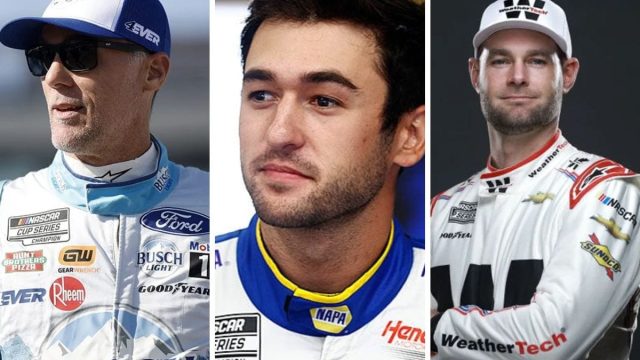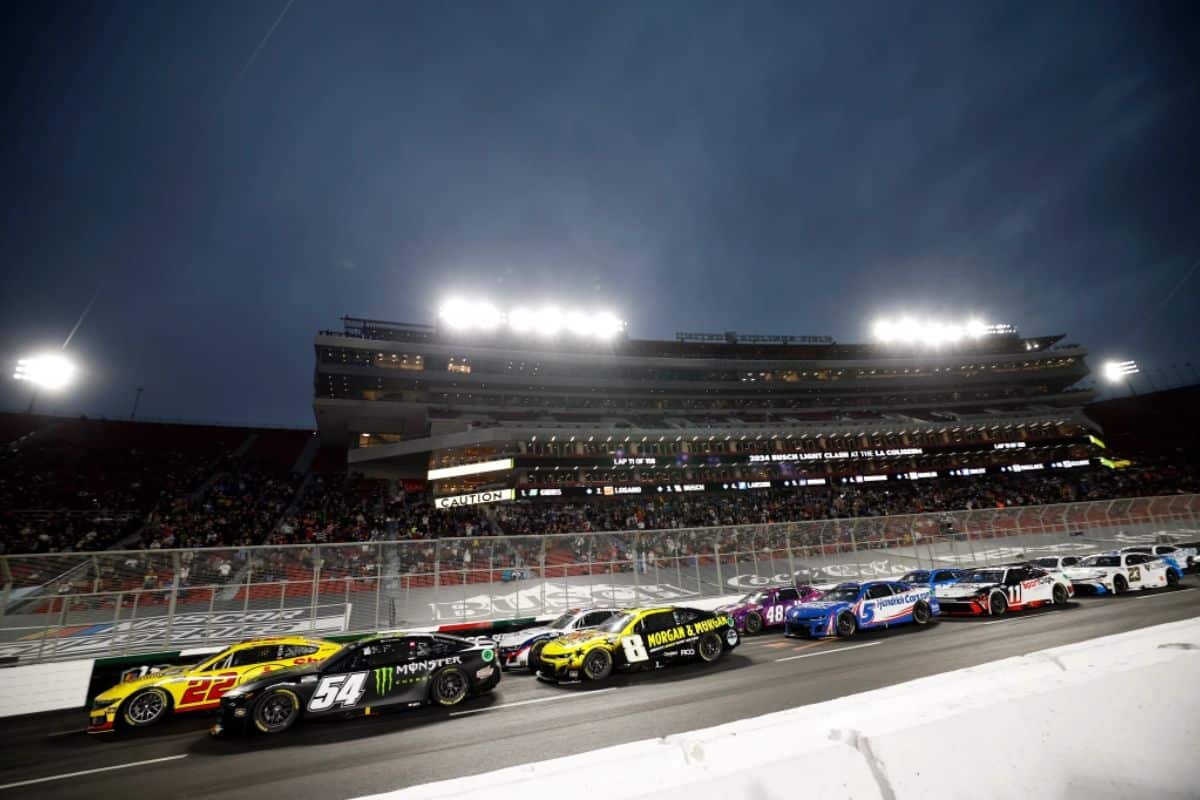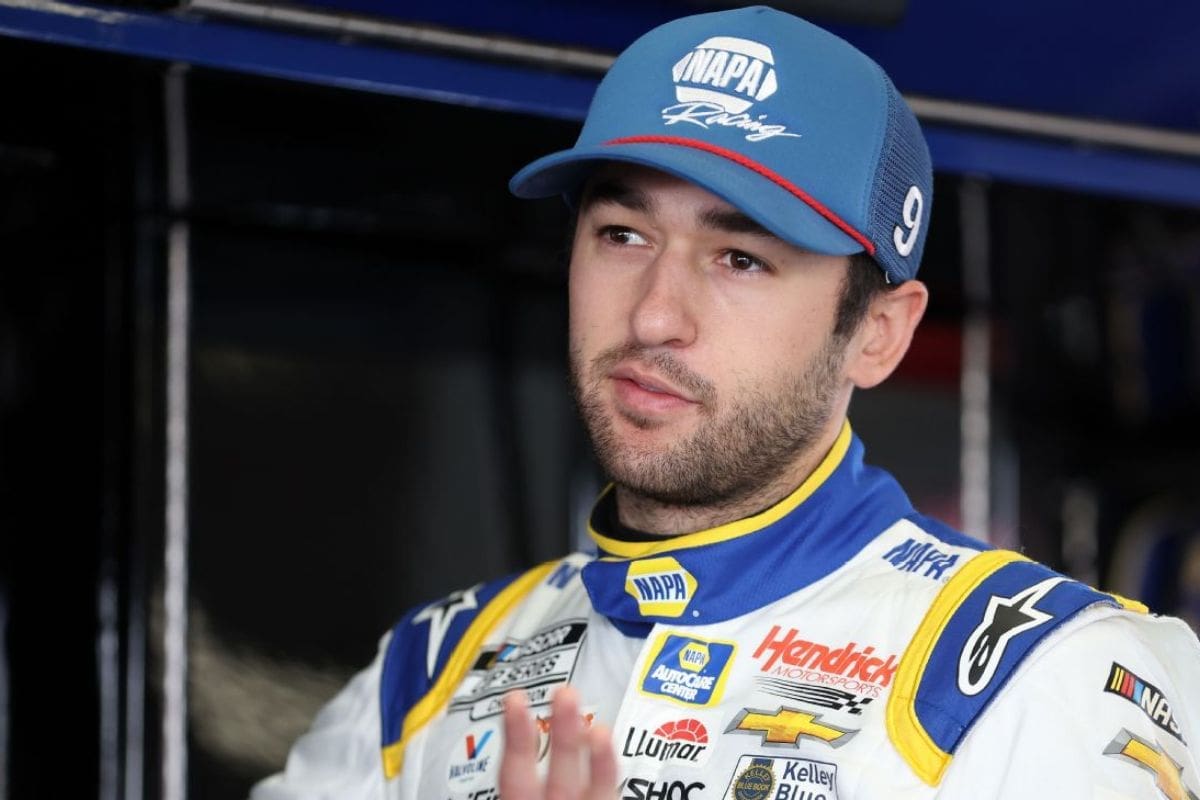Kevin Harvick Declares New Road Racing Era: Kevin Harvick‘s assertion of a significant shift in road racing, propelled by the skills of drivers like Chase Elliott and Shane van Gisbergen (SVG), marks a game-changing moment for NASCAR. This change highlights the evolution of road course racing from a specialized skill to a crucial championship battleground. The Next Gen era’s heightened competitiveness and technical advancements are reshaping the sport’s landscape, demanding adaptability and precision.
As Chase Elliott’s consistent performances and SVG’s creative techniques set new standards, the implications for future races are profound. The upcoming challenges and opportunities at Iowa Speedway further show this dynamic evolution.
Key Highlights
- Kevin Harvick recognizes the increased importance of road course racing in the Next Gen NASCAR era.
- Harvick highlights Chase Elliott and Shane van Gisbergen as new benchmarks in road course performance.
- The Next Gen cars’ advanced features, like independent rear suspensions, enhance road course competitiveness.
- Improved engineering precision and driver adaptability are essential for success in modern road course races.
- Elliott’s consistent high finishes and adaptability mark him as a pivotal figure in this new road racing era.
Exciting Action at Sonoma Raceway
The recent race at Sonoma Raceway exemplified the evolving landscape of NASCAR road racing, showcasing intense competition marked by eight caution flag runs and a strategic battle for victory between Kyle Larson and Martin Truex Jr. This race was a microcosm of how road course racing in NASCAR has transformed from a niche spectacle into a cornerstone of the series, demanding heightened skill and strategic expertise from drivers and teams equally.
The early stages of the race were characterized by an almost chaotic intensity, with drivers struggling for position leading to frequent caution flags. The eight caution flag runs, nearly a record, highlighted the unpredictable nature of the course and the razor-thin margin for error. Each caution period reset the field, providing opportunities for strategic gambits and pit stop strategies to come into play, adding layers of complexity to the race.
In the final segment, the focus shifted to a cleaner, more tactical battle for the lead. Kyle Larson and Martin Truex Jr. emerged as the primary contenders, their duel embodying the blend of raw driving talent and strategic mastery that defines modern NASCAR road racing. Larson’s ability to maintain composure under challenges, coupled with Truex Jr.’s relentless pursuit, made for an engaging climax.
Evolution of Road Course Racing in NASCAR
Road course racing in NASCAR has undergone a significant metamorphosis, evolving from a specialized domain dominated by a few experts into a crucial aspect of the series requiring versatile skill sets and strategic intelligence from all competitors. The shift is evident as the sport moves from the era of icons like Jeff Gordon and Ricky Rudd to a new generation of drivers who are redefining the standards for excellence on these challenging tracks.
The transformation to the Next Gen era has introduced increased parity and competitiveness. Pioneers like Chase Elliott, Shane van Gisbergen (SVG), and Michael McDowell are at the forefront, setting new benchmarks with their performances. Their success is not merely about driving expertise but involves a deep understanding of the intricate dynamics of road courses.
The evolution of NASCAR’s road course racing is characterized by a blend of historical reverence and contemporary innovation. Kevin Harvick’s acknowledgment of the current trailblazers emphasizes a broader narrative—NASCAR is no longer a series where road courses are niche events. Instead, these tracks have become essential arenas where the championship can be won or lost.
“It’s just the different era of road racing with this car because it’s very much more along the lines of a sports car, and that’s the reason you can see SVG, McDowell, and some of those guys that are coming from different forms of racing to step in and be competitive and the way you have to drive the car. That’s the struggle from guys like myself that come from a heavy background of the old car, Chase Elliott, and some of these different guys.” – Harvick
Technical Challenges of Next Gen Road Course Racing
Mastering the technical challenges of Next Gen road course racing demands a delicate combination of engineering precision, driver adaptability, and strategic foresight. Unlike the traditional oval tracks, road courses present a various of intricacies, ranging from varied elevation changes to complex cornering sequences. The Next Gen cars have introduced newer dynamics with their independent rear suspensions, lower profile tires, and enhanced aerodynamics, necessitating a refined approach to vehicle setup and performance optimization.
Engineering precision is paramount. The Next Gen car’s independent rear suspension offers superior handling capabilities but also requires meticulous calibration to optimize grip and stability through diverse cornering scenarios. Engineers must balance stiffness and compliance to suit the undulating terrains and frequent directional changes of road courses. The lower profile tires with wider contact patches provide increased grip but are more susceptible to wear and thermal degradation, demanding judicious tire management strategies.
You have to drive the car hard into the corner the way that you downshifted as much different with the sequential shifter and upshift, and all the things about this car is different … And you’ve got to get the braking; that’s really where most everything happens to make a lot of speed. You have to be good in the brake zones.” – Harvick
Driver adaptability is equally crucial. Modern drivers like Chase Elliott and Shane van Gisbergen excel in this domain, seamlessly adjusting between different braking techniques, throttle applications, and steering inputs required for road courses. The ability to read the track conditions and dynamically adjust driving styles in real-time sets these drivers apart.
Strategic foresight rounds out the triad of mastery. Road course races often hinge on pit strategy, with fuel windows and tire changes playing decisive roles. Teams must anticipate caution periods and weather impacts, timing their pit stops to perfection to gain track position. The complexity of road courses amplifies the necessity for precise communication between driver and crew, ensuring that data-driven decisions are made promptly.
Chase Elliott’s Quiet Championship Charge
Despite the absence of recent road course victories, Chase Elliott’s methodical consistency has positioned him as a formidable contender in the championship race. As the driver with the highest number of road course wins (7) among active competitors, Elliott’s ability to maintain a competitive edge in varying conditions highlights his adaptability and strategic skill.
While his last road course victory dates back to before 2022, Elliott’s performance has not waned. toyota-save-mart-350-full-results/”>His fourth-place finish at Sonoma is a confirmation of his enduring competitiveness, even when the top step of the podium remains elusive. This placement, amidst a field of seasoned veterans and emerging talents, reinforces his reputation as a reliable and strategic racer who capitalizes on opportunities to accumulate crucial points.
Elliott’s approach to the championship is characterized by a blend of patience and precision. Rather than being swayed by the allure of sporadic victories, he prioritizes consistent high finishes, which collectively strengthen his standing in the championship race. This methodical approach allows him to remain in the mix, leveraging the robustness of Hendrick Motorsports’ engineering and strategy.
Elliott’s Performance and Outlook Heading to Iowa Speedway
Heading into Iowa Speedway, Chase Elliott’s consistent performance and remarkable success in the Xfinity Series position him as a strong contender for a top finish on the newly paved track. With a commendable fourth-place finish at Sonoma, Elliott demonstrated his capacity to maintain competitive form amidst the evolving challenges of the Cup Series. This result, indicative of his steady ascendancy, highlights his potential to capitalize on momentum as the series shifts to Iowa.
Elliott’s track record at Iowa Speedway is particularly striking. His previous Xfinity Series outings at this venue have yielded two top-five finishes in his last four starts, including an impressive runner-up result. Such performances shows his aptitude for short tracks and signal a deeper understanding of the intricacies required to excel on this specific circuit. The recent repaving of Iowa Speedway adds another layer of complexity, but Elliott’s adaptability and tactical skill equip him well to navigate these new conditions.
Moreover, Elliott’s current trajectory within the championship standings is bolstered by his methodical approach and consistency. His ability to consistently secure top finishes, even when not clinching victory, is indicative of a driver with a strategic mindset focused on the long game.
As the Cup Series sets off on its inaugural visit to Iowa Speedway, Elliott’s blend of experience, consistency, and form positions him as a formidable force. Observers and competitors alike would be remiss to overlook Elliott’s potential to emerge not just as a sneaky contender but as a leading figure capable of seizing victory on this freshly minted battlefield.
News in Brief: Kevin Harvick Declares New Road Racing Era
The declaration by Kevin Harvick of a new road racing era, highlighted by the performances of Chase Elliott and Shane van Gisbergen, showcases a significant period of change in NASCAR.
The evolution of road course racing, coupled with the technical intricacies of the Next Gen cars, has enriched competitiveness and parity within the series.
This shift not only respects historical legacies but also accentuates the strategic importance of road courses in the pursuit of championship success, marking a momentous juncture in NASCAR’s progression.
ALSO READ: Kevin Harvick Criticizes Rookie Mistakes, Highlights Austin Cindric



